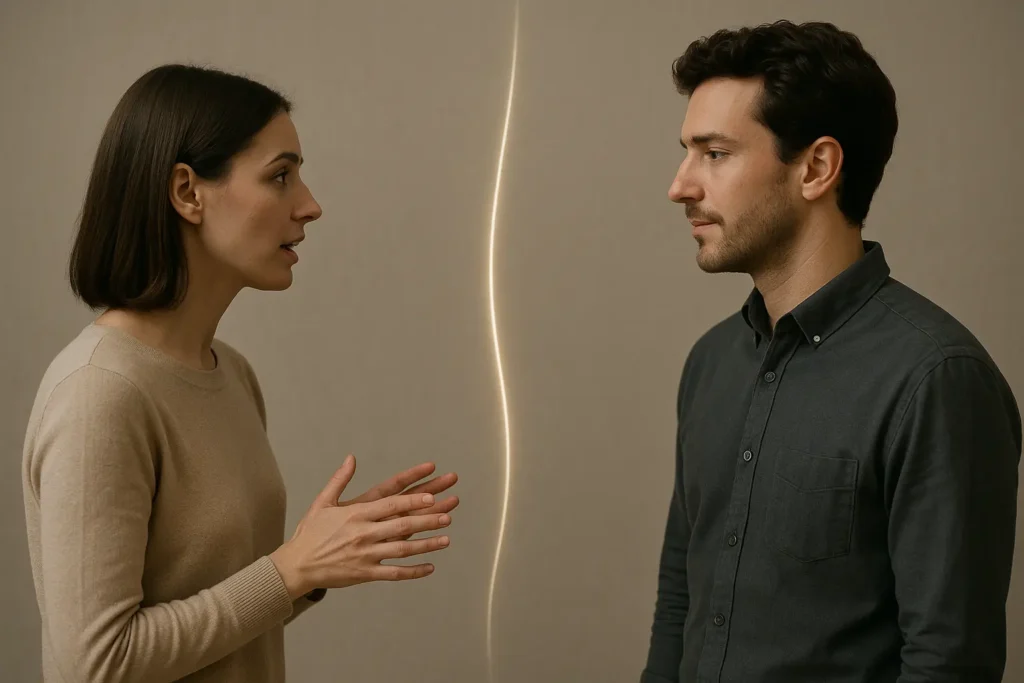The quality of our lives is directly linked to the quality of our connections. At the heart of every strong connection—whether with a partner, family, friend, or colleague—lie two essential elements: effective communication and the principles of a healthy relationship. This guide will provide you with the foundational skills and insights to improve how you connect, understand, and grow with the people who matter most.

Part 1: Mastering Interpersonal Communication Skills
Effective communication is more than just talking; it’s about being understood and, just as importantly, about understanding others. These are the core skills that form the foundation of any meaningful interaction.
The Art of Active Listening: Seek First to Understand

- Active listening is not just waiting for your turn to speak. It’s fully concentrating on the speaker to understand their message, emotions, and intent. A simple technique is to paraphrase what you heard (“So, what I’m hearing you say is…”) to ensure understanding before you respond.
To truly master this skill, read our in-depth article: How to Develop Powerful Active Listening Skills.
Beyond Words: Understanding Non-Verbal Cues
- Up to 90% of communication is non-verbal. Pay attention to body language, tone of voice, and eye contact. These signals often convey more than words ever could, revealing the true emotional context of a conversation.
Decode the unspoken language with our guide: [Body Language: Understanding and Using Non-Verbal Cues].
Expressing Yourself with Clarity and Assertiveness
- Assertiveness is the healthy middle ground between being passive (letting others walk over you) and being aggressive (walking over others). It’s about stating your needs and opinions respectfully, using “I” statements to express your feelings without placing blame.
Part 2: The Pillars of Healthy Relationships
With a foundation of good communication, you can build relationships that are supportive, trusting, and resilient.
Trust and Vulnerability: The Bedrock of Connection
- Trust is the glue that holds relationships together. It’s built over time through consistency, reliability, and honesty. Vulnerability—the courage to be seen as you are—is the catalyst that allows true trust and connection to form.
Setting Healthy Boundaries for Self-Respect

- Boundaries are the limits we set to protect our well-being. They are not walls to keep people out; they are a necessary act of self-respect that teaches others how to treat you and strengthens relationships in the long run.
This is a critical skill. Learn how with our practical guide: [Setting Boundaries in Relationships (Romantic, Family, Friendships)].
Navigating Conflict Constructively

- Conflict is a natural part of any relationship. The key is not to avoid it, but to learn how to navigate it respectfully. Use “I” statements (“I feel hurt when…”) instead of accusatory “you” statements (“You always…”). Focus on solving the problem together, not on winning the argument.
Turn disagreements into opportunities for growth: [Handling Conflicts in Romantic Relationships Constructively].
Cultivating Connections That Last
Improving your communication skills and understanding the dynamics of healthy relationships is an ongoing practice. It requires patience, empathy, and a willingness to be vulnerable. By investing in these skills, you are investing in a life richer with meaningful and supportive connections.
What is one communication skill you want to practice this week? Let us know in the comments!
